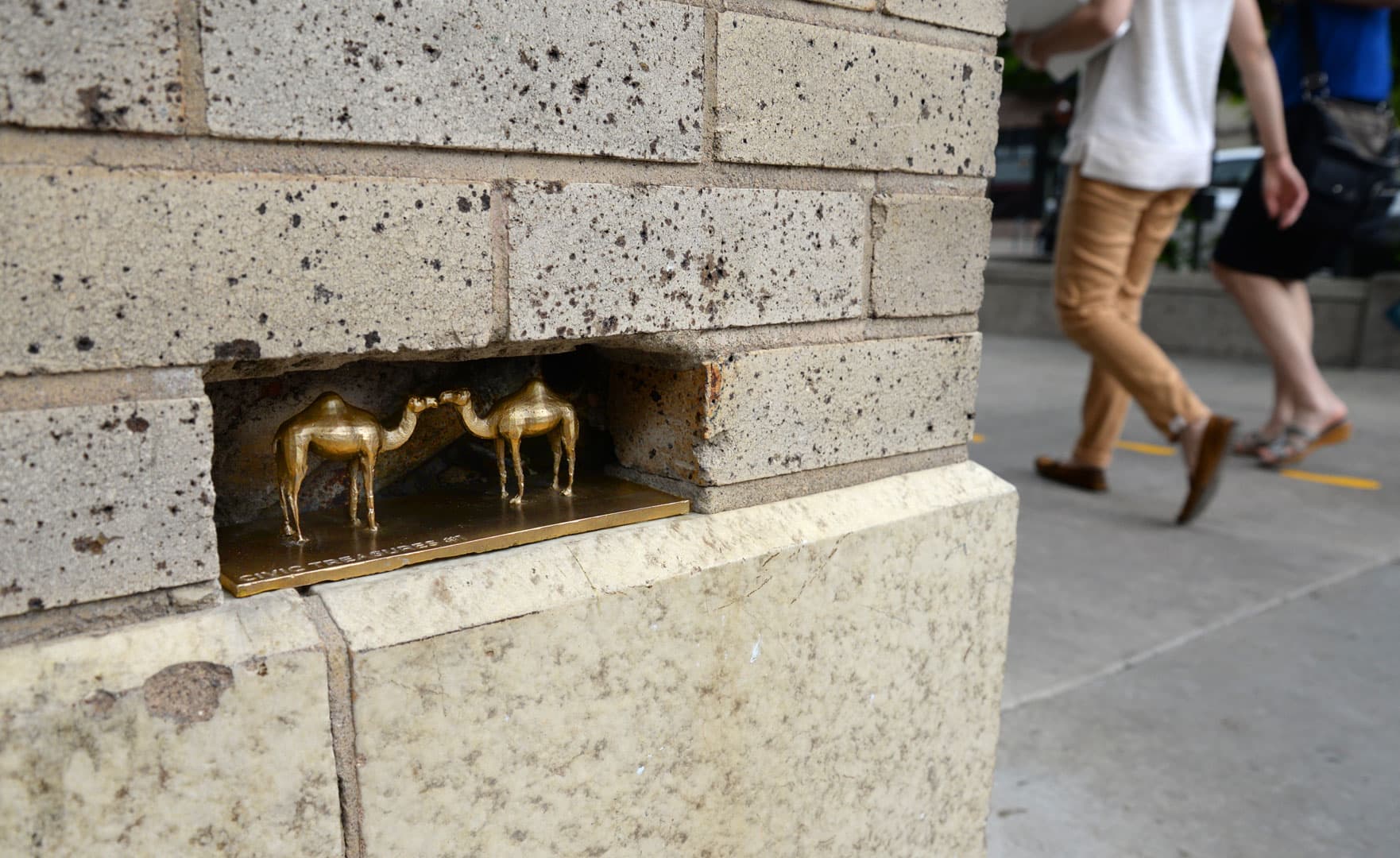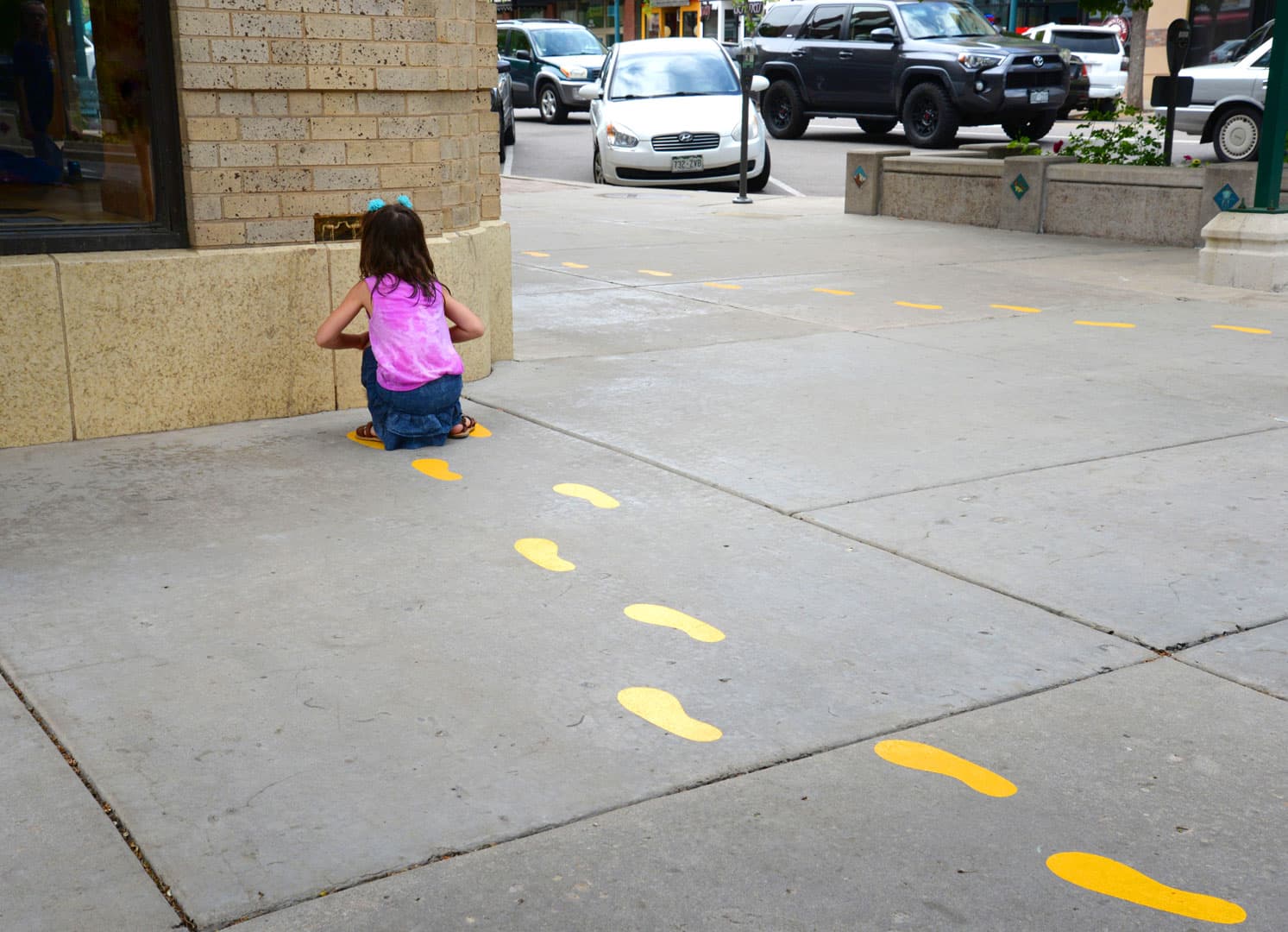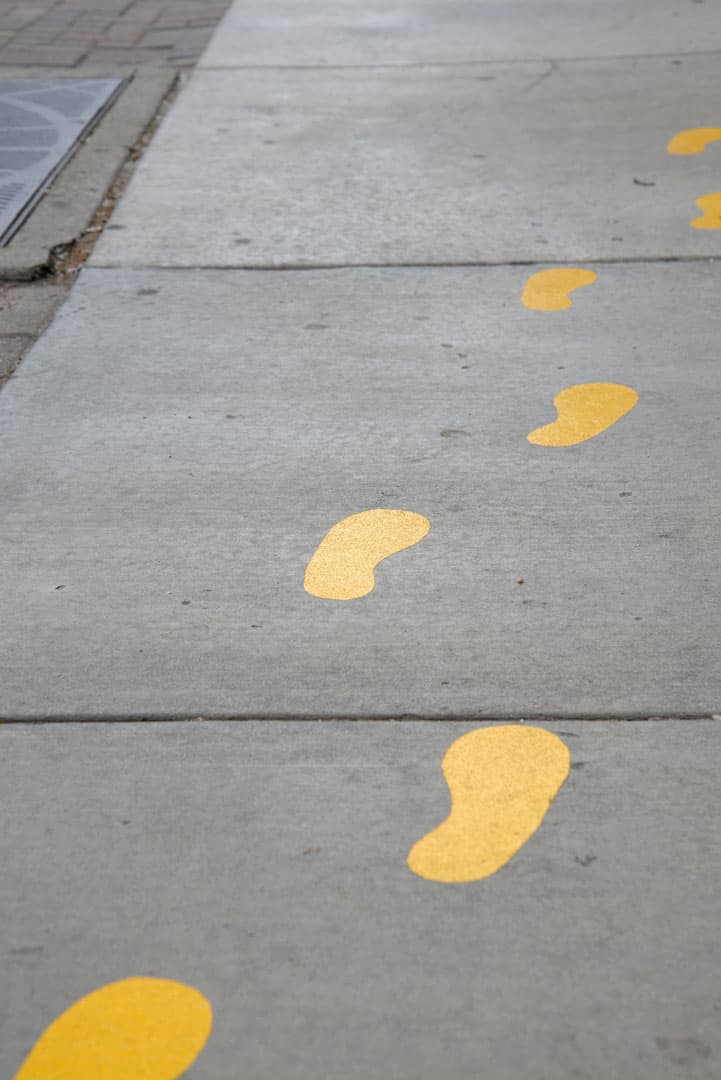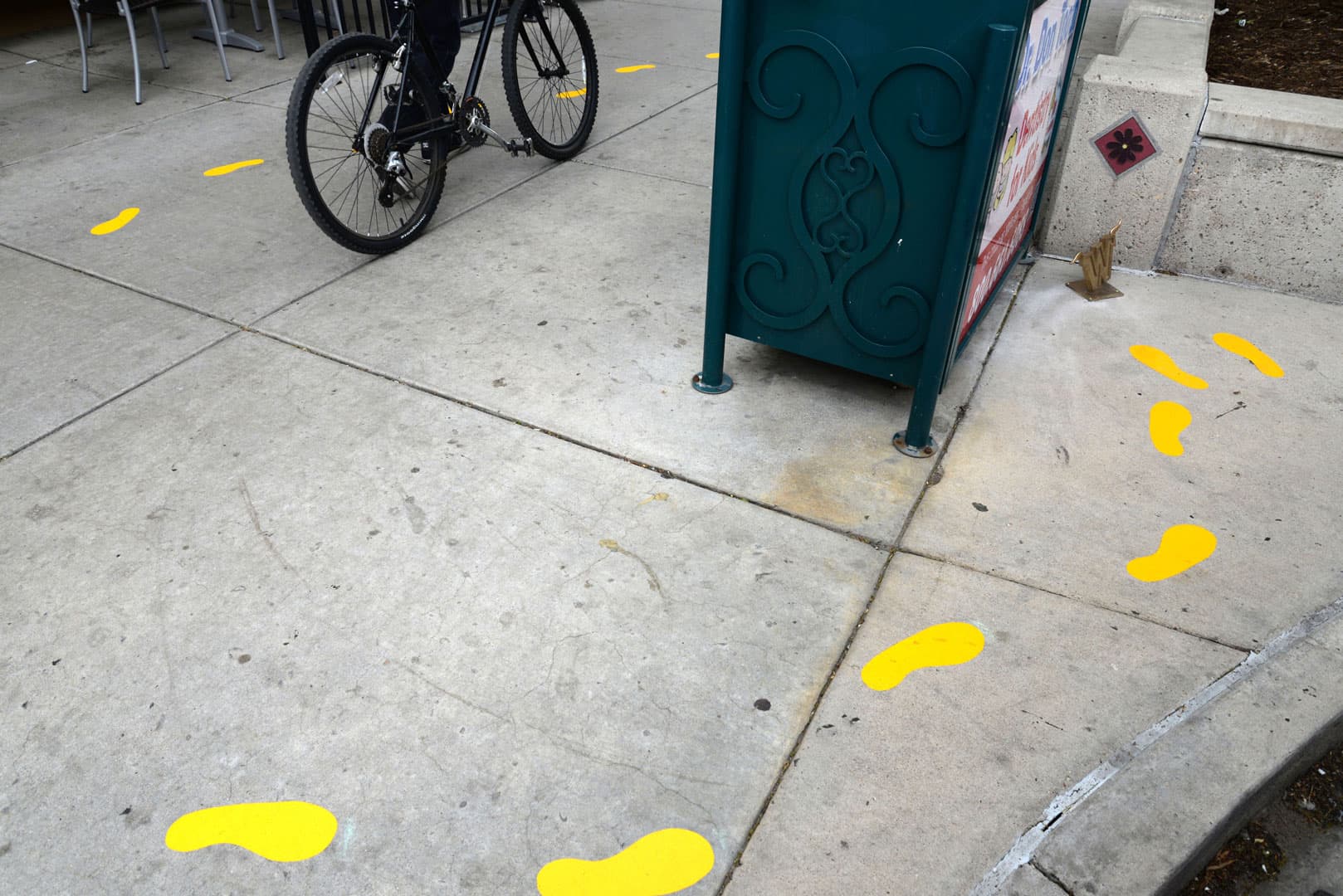Civic Treasures:
Described by Guy Debord in the Situationist International (1955), psychogeography is an approach that emphasizes playfulness and “drifting” around urban environments. With the Situationist’s approach in mind, Civic Treasures was created allowing for a chance to introduce playful disruptions into the community, testing the utility of public art as a mode of participation, while strengthening the relationship the viewer has with the community.
Public art does not have to be monumental or obvious to be appreciated. It can also be intimate and inconspicuous. Too often, the artist forgets to take the experience of the viewer into account. My installations utilize playful wayfinders to interrupt the viewer’s routine, taking them on a short journey, resulting in the discovery of a hidden treasure, a miniature gold sculpture. This playful experience is different than a traditional static public work, as it involves the viewer to participate in the locating of these works, hidden within small crevices or tucked away places. Celebrating local civic landmarks, monuments, and beloved attractions, the sculptures themselves further push the idea of participation and play, as they are not obvious representations, but visual puzzles, which the viewer must decipher to appreciate. Civic Treasures puts the “public” back into public art, facilitating a playful experience while building community and encouraging participation.
civictreasures.com
Press:
Follow the yellow footprints to Art in the Streets in downtown Colorado Springs
Artist pays tribute to history of downtown Colorado Springs
Popular tiny camel statue stolen from downtown Colorado Springs
Follow up: Community funds Kissing Camels statue replacement----and more
Downtown Partnership raises enough money to replace stolen Kissing Camels sculpture
Popular mini sculpture of kissing camels returns to downtown Colorado Springs
Artist replaces Pikes Peek sculpture stolen from downtown Colorado Springs sidewalk






